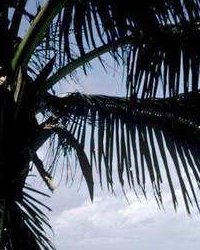Naar aanleiding van wat er op uw website staat:
Algehele liquidatie op het nippertje voorkomen
De oorspronkelijke doelgroep heeft vanaf maart 1942 tot eind 1945 als militair of burger opgesloten gezeten in
Japanse kampen in de Indische archipel en op het Aziatische continent. Bestemming: algehele vernietiging op 26
augustus 1945 (zie The Other Holocaust van dr Linda Goetz Holmes, 1998, gebaseerd op geheime documenten van de
Amerikaanse Militaire Inlichtingendienst)...
kan ik nog toevoegen dat in ons Jappenkamp op Celebes na Paré Paré er een barre ervaring zich voordeed.
[Het is in de Engelse taal.]
We were transported in trucks in such a way that the population were not to see us. Afraid they would liberate us???
Who knows. After some 6 hours drive we were told to get off the trucks. No food. Just water to drink and sleep on the
ground of a large garage. It was bitterly cold. Particularly so as we had for the larger part bartered for food our
warmer clothing. In the morning, still without food we were to walk into the jungle till we came upon a primitively
built conglomeration of barracks.
That had to be our camp! No facilities for bathing or water supply for it. There was a brook where we could try to
keep clean. Nothing like the previous camp in Bodjo we had left. There, a river supplied us with sufficient water
for cooking, washing and drinking and even food in the form of fish and shrimps. In our new surroundings it was
utterly primitive. Latrines had to be dug by ourselves. In the night it was very dark as the overhead canopy of the
jungle trees did not allow moon or starlight to penetrate. We could still find our way as the fluorescence of moss
on the barks of trees gave an eerie green presence. Still many slipped and fell in those latrines provoking protests
from others when returning to our primitive bunks of not wider then two feet [60 cm] carrying an awful shitty stench
with them.
We arrived with 594 persons. The death rate climbed. From the cold, disease and far too little food many more died.
And in the end only 368 [?] persons saw freedom.
Those of us still able to work were ordered to dig tunnels in the mountainside. To protect us against bombings it
was said."Not so!" claimed the mine engineer of the Billiton Comp amongst us. "It is more likely to be used as the
final solution! A hand grenade or two would suffice to collapse and bury those huddled inside without a trace!"
After the war, this was confirmed by the findings of instructions to the Japanese commanding officers. We were to
be liquidated, basta!
Anyway, the digging of those "shelters" was successfully sabotaged.
Being far from the coast, there was no sign anymore of war activities. Only rumours reached us. But there was inside
our camp a Dr Klamer, our physics teacher who got his Dr degree in Groningen on the thesis "Radio emanation of the
gas Xeon". His promoter was professor Joliot, the son-in-law of Eva Curie. And he stated that this war would end with
several huge explosions by a new technique based on nuclear disintregation of material. He did not call it the atom
bomb but most certainly described the phenomenon. I also carry his signature on my HBS diploma.
He ended his live as director of the "Meteorology Institute" in De Bilt in Holland.
And then on the 6th and 8th August the bombs were dropped with the 15th August 1945 the end of the war. A Japanese
captain came to inform us that it was all over and that we could go home now . . . .
|



